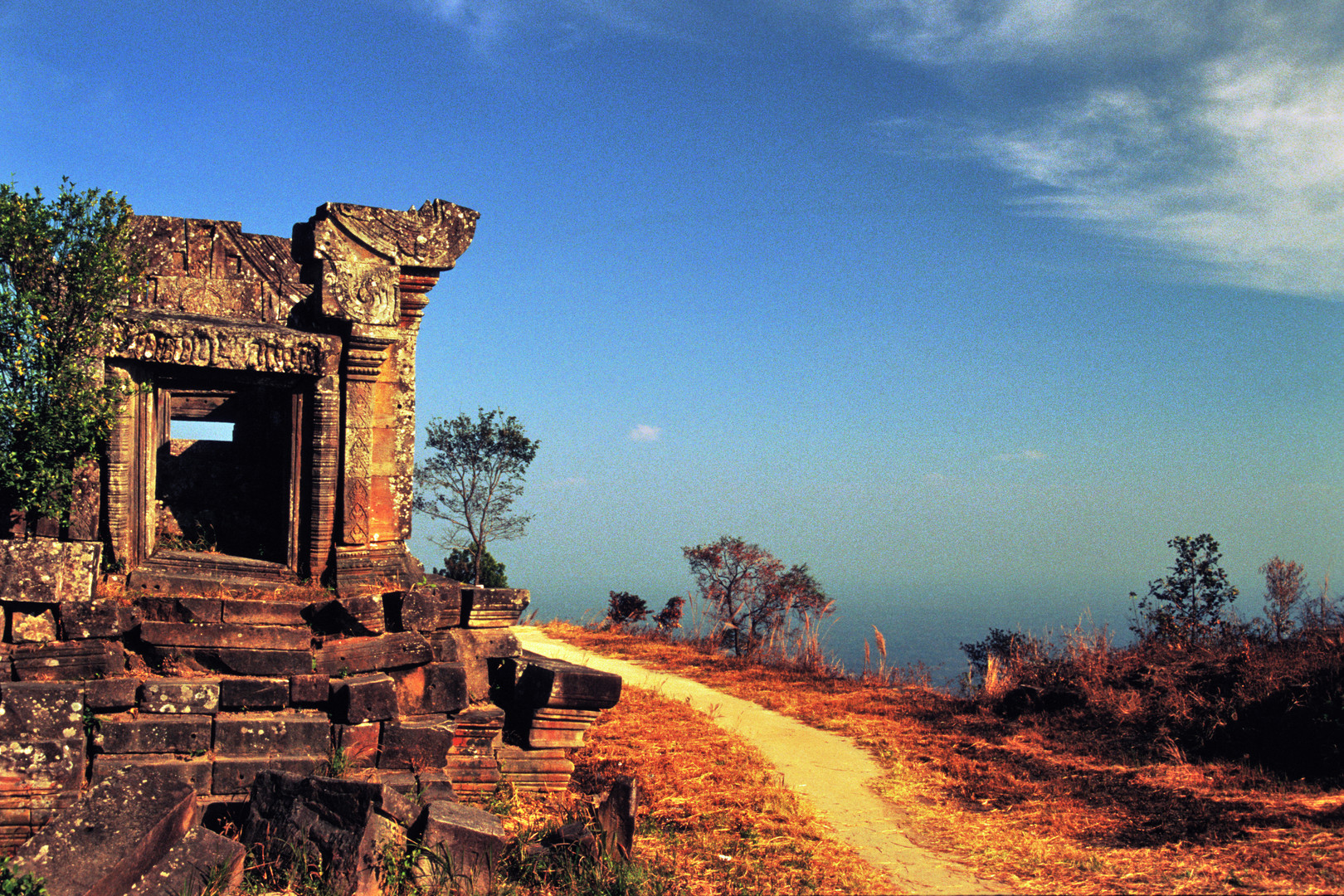Prasat Khao Phra Vihaan, Gopura of the fourth level
In January 2000 this ancient place on Cambodian territory was opened for visitors a short time. My home place in Bangkok is opposite of the Thai Forest Department and we've very good connections to the officers who immediately informed us that this place we could have to visit. Due the permanent conflict between the local Cambodian and Thai officers about making the tourist business this very interesting and amazing place is closed for the public most of the time.
Several attempts were made after 1991 to open Khao Preah Vihear to visitors. This was intermittently successfully but the complex tended to close frequently due to the propensity of Khmer Rouge guerilla units to reoccupy the complex at will. This caused numerous clashes between Cambodian Government and Khmer Rouge forces between 1993 and 1997. After the death of the Khmer Rouge leader Pol Pot in 1998 and the eradication of the last Khmer Rouge bases in the area, Khao Phra Vihaan finally reopened to visitors. From that time the only hiccups tended to be bureaucratic, caused by disputes between Thai and Cambodian Officials over dividing up the admission fees to the Complex.
For people interested in Khmer monuments together with contemporary history, a place to see is Khao Preah Vihear in the Isaan province of Si Saket . The monument on the Thai/Cambodia border sits astride a sheer drop mountain ridge on the Dangrek mountain range with sweeping views across North-West Cambodia. Although the monument appears to be on Thai territory, the Temple complex itself actually belongs to Cambodia.
This was due to a World Court decision in 1963 recognising in practical terms that the complex was on Thai soil due to its general inaccessibility from Cambodia, but in the end still declared in Cambodia's favour because of its strong connection to the Angkor period of temple construction.
Although the complex slumbered out of world view for centuries Khao Preah Vihear has not escaped the consequences of modern times. After the Khmer Rouge took power in Cambodia in 1975 and its subsequent defeat by the Vietnamese in 1978, remnants of the Khmer Rouge occupied the complex and surrounding forests. In doing this they seeded the local area and the complex itself with land mines, constructed bomb shelters and even installed some artillery pieces.
The photo was shot in 2000 by a conventional Ektachrome 50 ASA slide film and scanned with a NIKON CoolScan 5000 ED.










Christian Dolle 21/07/2013 19:34
Das finde ich großartig. Sieht aus wie das Ende der Welt, allerdings ein Ende, das neugierig auf die nächste Welt hinter der Biegung macht. Echt klasse fotografiert.Pfriemer 21/07/2013 18:41
Danke, lieber Matthias, die Spannungen dauern tatsächlich an, anstatt dass sich die Thais mit den Khmers einigen und gemeinsam profitieren; die Thais an der Versorgung und den Transport der Touris zu der Kulturstätte und die Khmers am Kurzzeitvisa und der Eintrittsgebühr. So war es im April 2000 und hatte wunderbar funktioniert. Die Konflikte sind künstlich von den "oberen" Thais, um von innerpolitischen Problemen abzulenken. Die Arroganz und der Chauvinismus dieser sind kaum zu überbieten, Gruß WolfgangMatthias Krug-Bamberg 21/07/2013 18:19
Eine super schöne, friedliche Stimmung. Nachdem der Tempelkomplex jetzt von kambodschanischer Seite etwas leichter zu erreichen ist, ist es von Thailand aus unmöglich, dort hin zu gelangen. Die Spannungen dauern an.HG Matthias